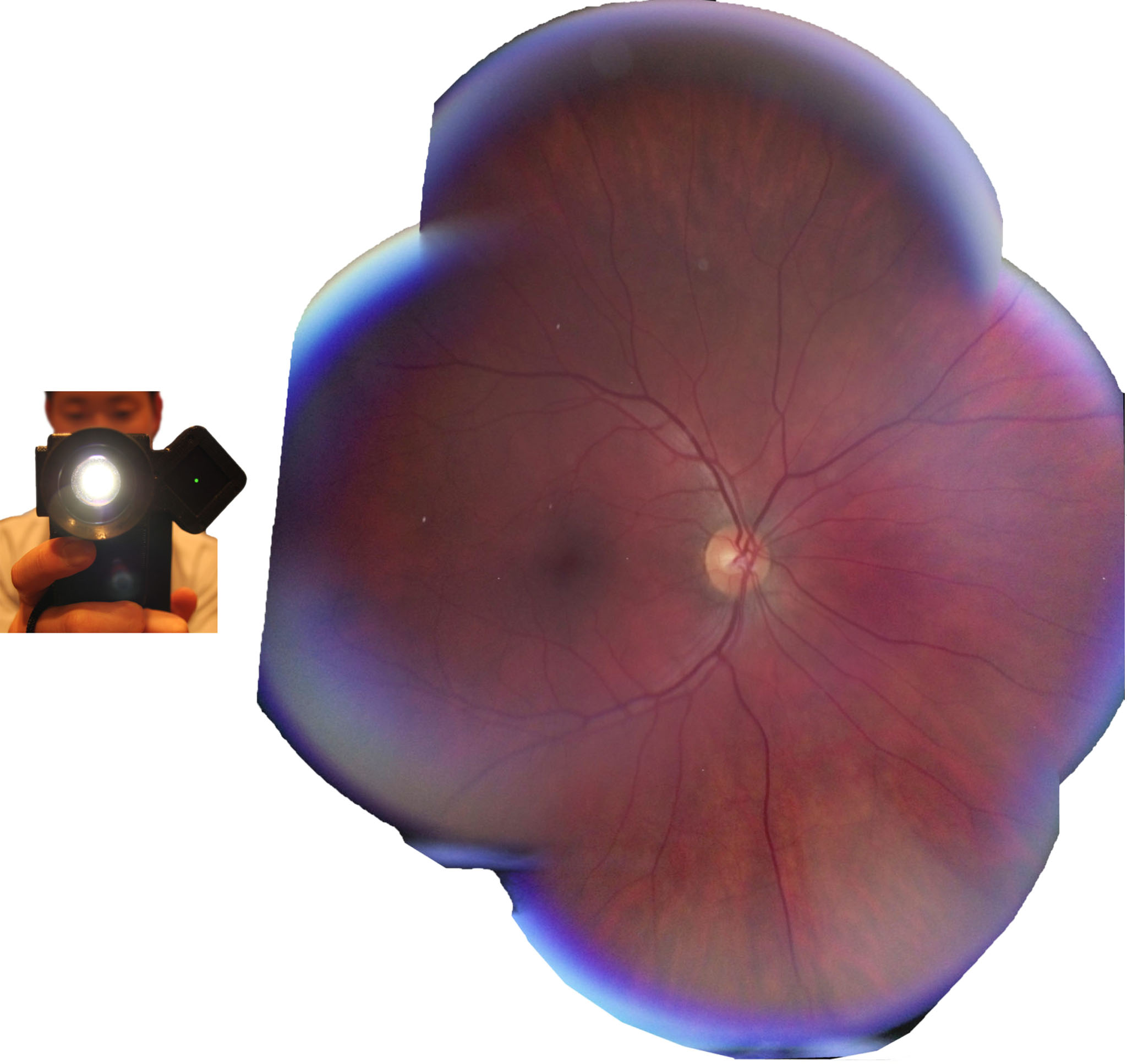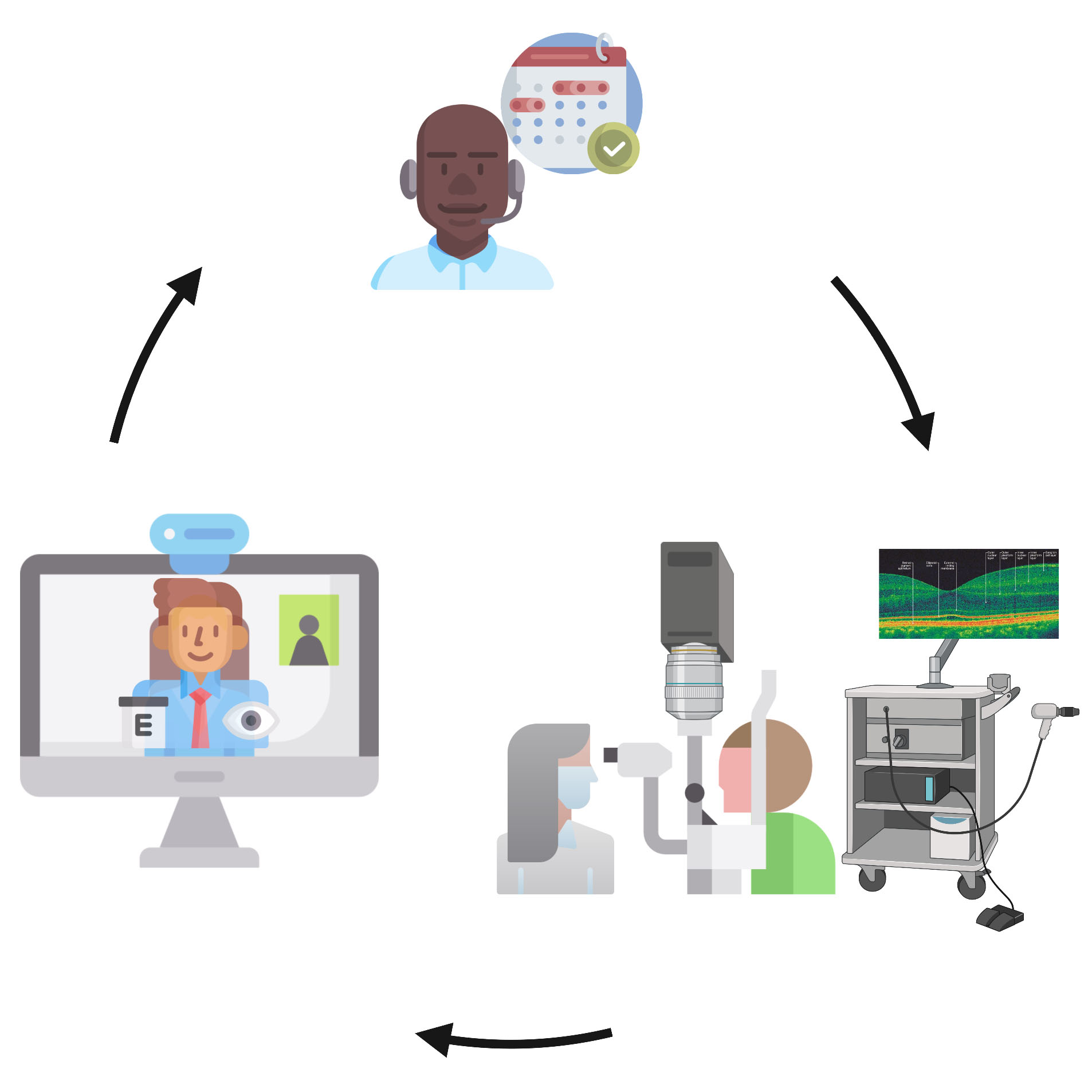Kim Lab Research
Advanced Nonlinear-Adaptive Imaging and Analysis in the Eye:
Traditional light-based imaging methods focus directly through the pupil to visualize the posterior intraocular anatomy. However, these approaches are unable to image much of the deeper or peripheral structures due to heavy scattering and absorption of opaque and pigmented tissues. These regions of the eye are nevertheless essential for ocular function and can be involved in many blinding conditions. We therefore develop and employ advanced nonlinear and adaptive optical imaging methods to visualize previously inaccessible regions of the living eye with sub-cellular and resolution and molecular contrast. Additionally, we develop computational methods to interpret this image data to provide new ways of studying development and physiology in the eye with elegant spatiotemporal detail.
Vessel-Associated Dysfunction in Ocular Disease:
We combine genetic disease models with intravital imaging, computational flow analysis, and molecular assays to interrogate the developmental, physiologic, and molecular bases of vessel dysfunction in neovascular age-related macular degeneration (AMD) and glaucoma, both leading causes of worldwide blindness. In particular we: (1) investigate developmental and physiological mechanisms involved in advanced vascular remodeling associated with treatment-resistant forms of neovascular AMD; and (2) study aqueous outflow dynamics from the eye to better target therapy and to evaluate treatment response in glaucoma.
Traditional light-based imaging methods focus directly through the pupil to visualize the posterior intraocular anatomy. However, these approaches are unable to image much of the deeper or peripheral structures due to heavy scattering and absorption of opaque and pigmented tissues. These regions of the eye are nevertheless essential for ocular function and can be involved in many blinding conditions. We therefore develop and employ advanced nonlinear and adaptive optical imaging methods to visualize previously inaccessible regions of the living eye with sub-cellular and resolution and molecular contrast. Additionally, we develop computational methods to interpret this image data to provide new ways of studying development and physiology in the eye with elegant spatiotemporal detail.
Vessel-Associated Dysfunction in Ocular Disease:
We combine genetic disease models with intravital imaging, computational flow analysis, and molecular assays to interrogate the developmental, physiologic, and molecular bases of vessel dysfunction in neovascular age-related macular degeneration (AMD) and glaucoma, both leading causes of worldwide blindness. In particular we: (1) investigate developmental and physiological mechanisms involved in advanced vascular remodeling associated with treatment-resistant forms of neovascular AMD; and (2) study aqueous outflow dynamics from the eye to better target therapy and to evaluate treatment response in glaucoma.
Technologies for Eye Care Accessibility:
We leverage our expertise in optical engineering and computational analysis to improve delivery and accessibility of eye care in a way which aligns with our commitment to social impact. We have developed portable tools with front- and back-end automation for wide-field retinal imaging and screening with assistance of AI-entrained algorithms for retinal-vascular diseases such as diabetic retinopathy. We also evaluate implementations of remote ophthalmic imaging and testing to assist with telemedicine workflows.



